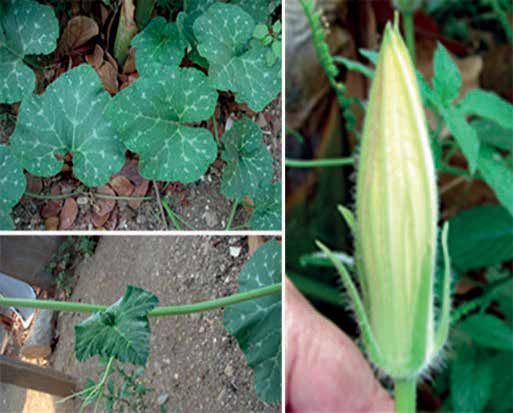Efecto de dos distancias de siembra sobre el desarrollo del cultivo de auyama variedad Bárbara
Abstract
One of the first decisions made by the farmer who wants to grow squash is the distance between plants to sow, this defines the sowing density and has important implications in the behavior of the crop, incidence of pests and diseases and finally in the yield of Harvest. In the Cucurbitaceae family there are 760 species of primarily tropical and subtropical distribution. Many of them are important sources of food for humans and some are fiber-producing species. The characteristics of this family make the plants easy to identify and they are known to be formed by vines, climbers or creepers, fast growing with palmately lobed leaves, with long non-woody stems. The flowers are unisexual, usually yellowish in color, usually opening for a very short time, often less than a day (Photo 1 a, b and c). The fruit is characteristic, it consists of a hard shell that contains a fleshy pulp with abundant seeds; its botanical name is peponid.
The species of this family are adapted to hot climates, they are cultivated in regions of temperate climate with long and warm summers. The Cucurbita species has round, soft, indefinite growth stems, large, reniform, orbicular leaves, not lobed cordate at the base, yellow flowers and with the fruit insertion peduncle, cylindrical and without grooves. Voluminous and elongated fruits, of variable color and orange, soft or hard flesh. Taking into account the importance of squash for the country's food security, in Venezuela there are few improved crops of this species and, at the same time, few studies have been carried out on this crop. The squash (C. moschata) (barbarian hybrid), presents plants with high productive potential and fruits with high uniformity in size and shape.
Regarding the sowing, the producers perform it at different densities giving varied yields, in this investigation the morphological characterization of the plant and the yield obtained using two planting densities was made.
References
Robinson, R. W. and D.S. Decker-Walters, D. S. 1997. Cucurbits. Crop production science in horticulture. New York: Cab international.
Záccari, F. y S. Sollier. 2002. La Densidad en el cultivo de zapallos (Cucúrbita sp.). En Seminario de Actualización en el Cultivo de Zapallo. Mesa Nacional de Cucurbitáceas. Carballo, S (Ed.).


